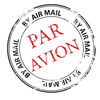Screenshots with Shutter
|
In software manuals, multimedia presentations and technical documentation screenshots are de rigueur for illustrating various functionality and options. Every common desktop environment in Linux provides its own tool for creating them.
Unfortunately, programs like Ksnapshot are missing various functions, such as capturing menu hierarchies, thus requiring laborious reworking with Gimp to get the desired results. Shutter makes this task easier by providing all the required tools from the start.
Set the Stage
You can find Shutter in the software repositories of all the major distributions. Because the program is constantly evolving, some repositories do contain outdated versions for installation.
[...]
Buy this article as PDF
Pages: 3
(incl. VAT)






